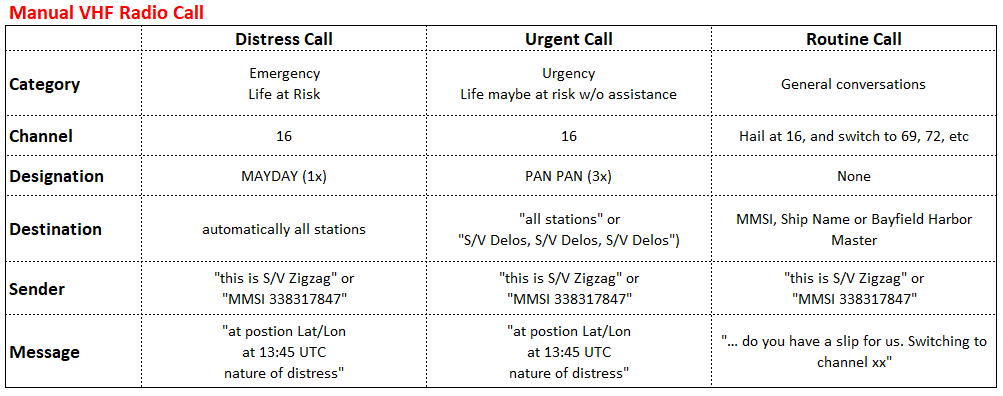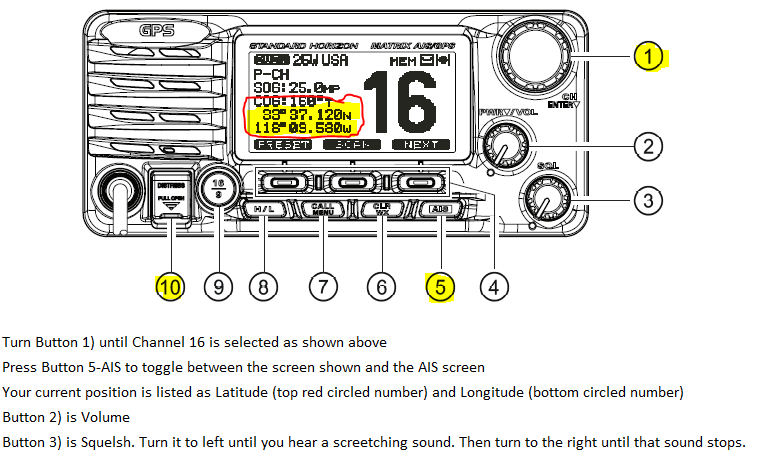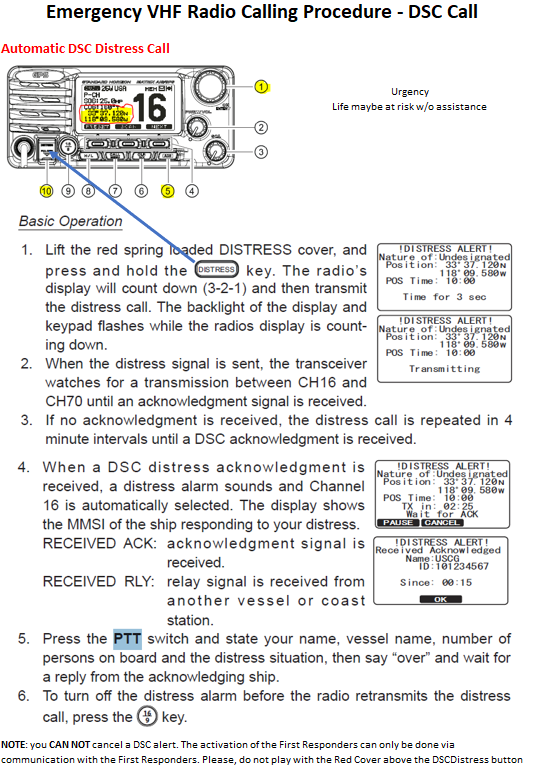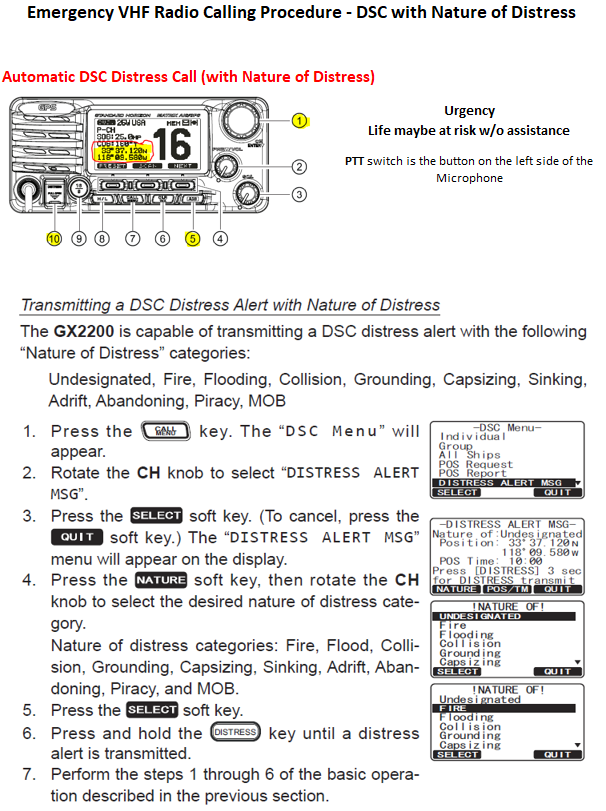Zigzag Safety Briefing
Sailing is a safe sport. Zigzag is a very safe and well maintained yacht. This briefing is part of our commitment to running a safe and fun program.
Life Jackets
- Required for start/finish and at night. But suggested all the time
- Should include a whistle to attract attention
- Should include light. Make sure yours works
Tether
- Required to be used at night, or as directed
- Ensure you know where yours is
- Make sure to have a knife to be able to cut the tether
- Clip onto jack lines, shrouds, or hard points
First Aid Kit
- Located in the cabinet above the sink in the head. Consider using the “Owie” kit for minor issues
MOB – if someone else goes in
- First person who notices the emergency yells "Man Overboard" (MOB). Permanent Spotter assigned thereafter
- Press the F2-key on the laptop in the Nav Station. This records the current position and can be used later to find the person
- Deploy MOM unit and any/all throwable floatation devices to mark the water
- Deploy Lifesling, and throwline, when alongside. All on stern rail
- Spinnaker up? Drop the sail, as boat turns up to head back to the MOB
- Begin to sail through the Quick Stop method shown below
- After checking for lines in the water start engine and drop all sails unless otherwise instructed by the skipper
- Do not jump into water to assist rescue, unless instructed to so do
MOB – if you are the victim - We WILL come back for you!
- In cold water, remember the 1-10-1 rule:
1 min to get your breathing under control
10 min of meaningful motion to accomplish all necessary equipment fixes
1 hr until hypothermia sets in - Inflate life jacket. Turn on light. Use whistle to attract attention
- Conserve energy — avoid panic, thrashing, or swimming toward floatation
- Conserve body heat — fetal/crouching position. Keep boots on
- Huddle together if more than one. Easier to see. Preserves body heat
- Look for the throwable floatation devices the boat will deploy
MOB – Quick Stop Method
- Shout "Man Overboard" Designate spotter
- Deploy immediate flotation: MOM, Lifesling, etc.
- Bring boat head-to-wind and beyond
- Allow headsail to back-wind and further slow the boat
- Keep turning with headsail backed until wind is abaft the beam
- Beam-to-broad reach course for 2x lengths then go to nearly dead downwind
- Drop headsail. Keep mainsail centered. The jib sheets are not slacked, to keep them inside the lifelines
- Hold the downward course until victim is abaft the beam.
- Gybe
- Approach the victim on a course of approximately 45-60 degrees off the wind
- Establish contact with the victim with heaving line or another device
- Effect recovery over the windward side
Life raft - Last resort. Zigzag is our best chance!
- Never step DOWN; only step UP
- Grab yellow ditch bag + air horn + SOLAS flare canister
- Tie off life raft securely to a cleat or stanchion base
- Deploy into water - Pull painter line to inflate
- Step up into it or use painter to pull yourself towards raft
- Cut painter line when all aboard
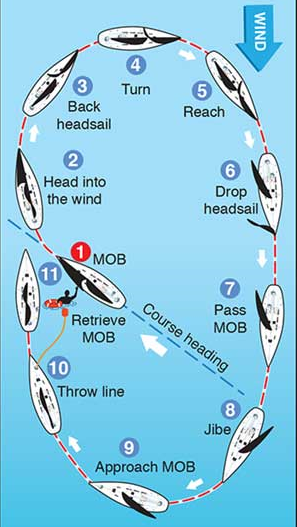
Mast Down - Let it go. It'll do more harm than good
- Check for crew injuries
- Check for hull punctures – spreader tips, etc.
- Remove rig – remove cotter pins and clevis pins at shroud base to release shrouds. Cut remaining lines with available tools
- Tools – hacksaw, hammer, drift, and bolt cutters in toolbox (head) and cockpit locker
Fire
- First person yells "FIRE"
- Crew and life raft on deck. Put life vests on. Prepare to abandon – but DO NOT deploy life raft
- Study Fire extinguisher locations on Emergency Equipment plan in Nav Station
- Remember PASS:
PULL - pull the pin
AIM - aim at the base of the fire
SQUEEZE - squeeze the trigger
SWEEP - sweep from side to side at the base of the fire
Water coming in
- Find the source – don’t start bailing
- Through hull fittings – wood plugs attached to all through hull fittings
- Punctured hull – stuff hole with something
- Buckets for bailing, in cockpit locker
- Monitor bilge pump pick-ups and assure no blockage
- Manual pump in cockpit
Flares - used to attract attention
- Yellow canister under the Nav Station
- Only use when chance of being seen
- Stand downwind
- Hold well away from face and wear a protective glove
- Strike cap or pull firing line as appropriate
Emergency Equipment plan
- Posted in the Nav Station
- Shows location of all safety related equipment
- Please invest a few moments to study it and identify/find all referenced equipment
- Ask questions
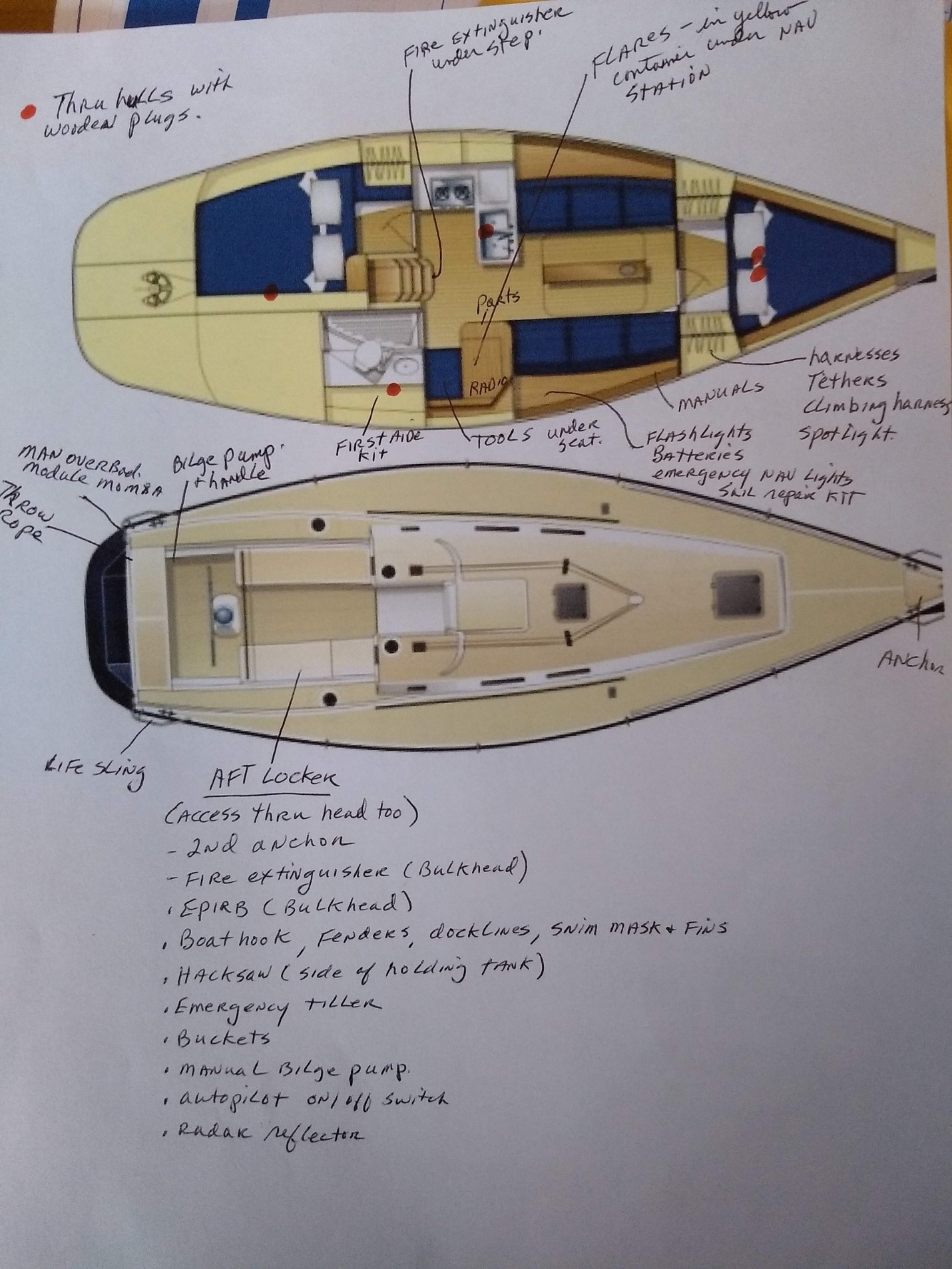
VHF Radio Communication
- "How-to use in an Emergency" cheat sheet posted in the Nav Station
- Use in emergency only unless otherwise directed by the skipper
